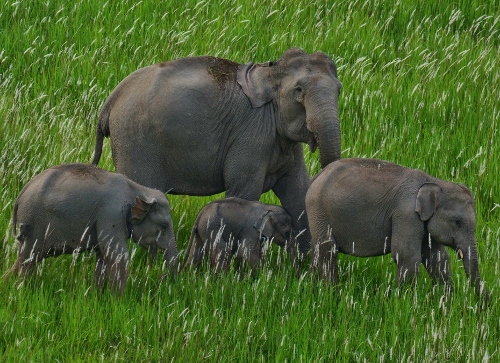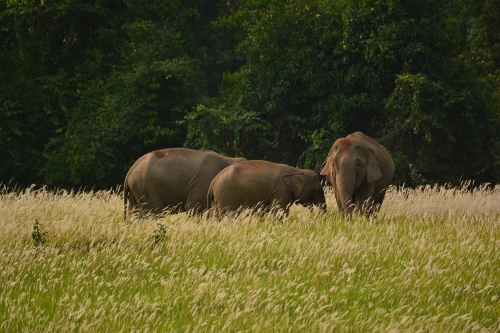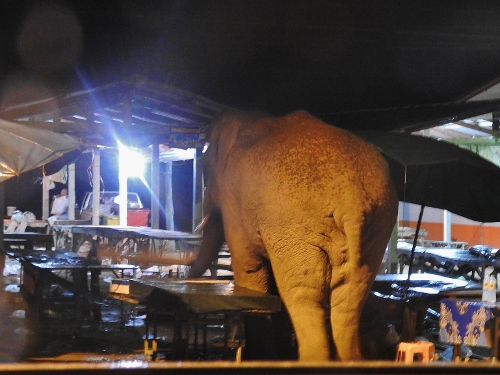Human Elephant Conflict HEC
The downside of conservation
During the sixties and seventies, protected areas were set up in Asia.
The idea was to have protected habitats for plants and wildlife, but a general understanding
developed, that national parks are meant to manage the remaining wildlife.
So wildlife was meant to stay within park boundaries and not outside.
Wild elephant populations started to gradually stabilize and increase in many protected areas.
Then came the eighties and nineties with a massive wave of reforestation.
Reforestation was carried out on a large scale inside the parks.
Most of it was along the edges in degraded forest and grasslands.
This all sounds fantastic! But this is one of the main roots for Human Elephant Conflict!
Habitat loss!

First we pushed wild elephants into protected areas and restricted their access to
traditional food sources in low land areas now converted for agriculture.
Then we planted trees, converting grasslands into forests.
Elephants eat mainly grass! Not trees!

Combined with an increasing population, HEC gradually became a serious problem in
many areas in Thailand, Sri Lanka and else where.
Jumbo Elephant Photo ID

is designed to help in Human Elephant Conflict mitigation.
Jumbo ID will collect data like individual elephants involved, increase or decrease of
elephants involved and location mapping as well as changes in migration between different
habitat within the parks.
Please Help us implementing Jumbo Elephant Photo ID.
https://www.naturewildlifeassoc.org/
Thank you

